Apple iPad. Apple Watch. Apple iPhone. Apple … orchards?
Yes it’s true, the technology behind some of the latest and greatest apple orchards is quite striking. This fall I toured orchards during harvest across Minnesota, Michigan, and Washington state. Washington was with Arctic Apples, the new non-browning “GMO” variety. And, boy, this technology is impressive!
I got a chance to interview the very knowledgeable Neal Carter, founder of Arctic Apples, and to see all of the orchard technology:
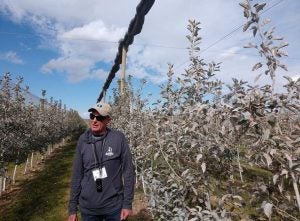
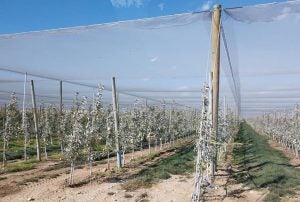
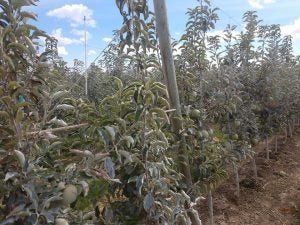
The first thing you may notice is what’s called “superspindle” blocks. They’re smaller “dwarf style” trees that are common nowadays. They’ve been bred this way for a number of reasons: better yields, easier harvesting, faster maturity, and better utilization of pest control methods and water irrigation, to name a few. (More on this here.). Years ago, growers could plant about 100 trees per acre, but now, with these types of trees, they can plant over 2,000 trees per acre! It’s obviously a much better use of land when an acre can jump from yielding 35 bins to 100+ bins. (A bin is 875 pounds.)
Speaking of irrigation, their drip tape system can be completely managed and monitored from their smart phone, anywhere in the world! They can keep an eye on their operating pressures and irrigation valves through a company called Ranch Systems. This system allows them to use just the right amount of water … no more or less. Every drop is monitored for proper usage, which also helps the grower’s bottom line.
The next thing you may notice is the netting over the top. This is supplied by a company Carter also owns called Farm Solutions. By rolling out this netting, it can protect apples from sunburn, keep them a bit cooler, protect from hail and storm damage, birds, etc. The orchard is also equipped with rabbit traps and fencing to keep out unwanted pests that can do significant damage. (If you’ve ever had rabbits in your garden, you understand what I mean.)
Next, you’ll see other tech like this:
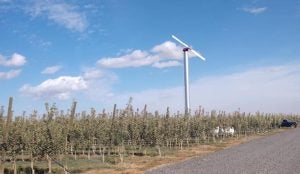
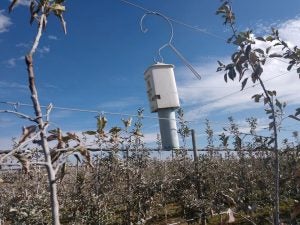
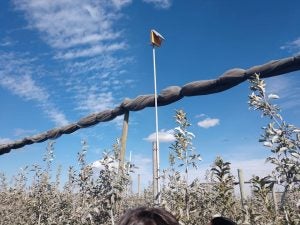
This was my favorite part — the Semios brand sensors. They act as a “brain” for the farm with up to 500,000 sensors and data points specific to each farm. They have network towers put into a model of cards and data that can monitor all different aspects like weather, skyline, temperature, humidity, mildew, predictive monitoring and forecasting, etc. The system can send you text message or email alerts for frost, fire blight, insect pest pressure, etc. From here, pheromone canisters can automatically go off, which attract harmful insects into traps and prevents or cuts down on the growers needing to spray pesticides.
Apple growers want to use as little chemical as possible because pesticide spray is an expensive and time-consuming feat. For example, 13 sprayers need to run for 24 hours to manage 400 acres. Can you imagine the work and money that goes into this? Couple that with the fact that each acre of Arctic Apples costs about $50,000 to get started, so apple growers need technology and reduced inputs to maintain a good return on their investment and be profitable. Yields are important and so is reduced disease and pressure from other pests. Again, sprayer technology nowadays manages spray, speed, droplet size, etc. Every little bit of money saved helps.
What if a frost is coming their way? Frost can quickly turn a grower’s yield to zero if not managed properly, so that’s why here they have automated wind machines that prevent frost damage, which come on automatically when the weather drops below 34 degrees Fahrenheit. Another great benefit to technology!
Here at Arctic Apples, these big apples don’t brown when you cut into them. They’re seeing improved yields, reduced food waste, creating delicious “to go” snacks, and finding creative ways for more people to get apples into their diets. They’re building new facilities for processing and storage, with 4 million Apples produced in 2018 and a predicted 20 million apples next year, and up to 60 million in 2020. In my opinion, the apples are so interesting and delicious! To learn more about how the technology works, check out this link.
Michelle Miller, the Farm Babe, is an Iowa-based farmer, public speaker, and writer, who lives and works with her boyfriend on their farm, which consists of row crops, beef cattle, and sheep. She believes education is key in bridging the gap between farmers and consumers.



